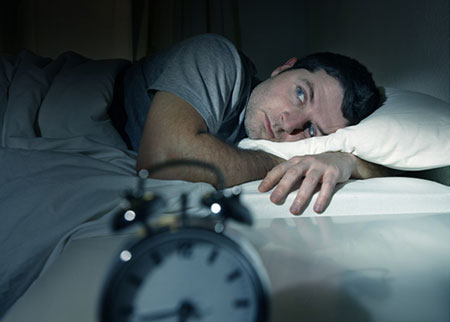1. What is the proper amount of sleep that a normal, healthy person should have?
6-8 hours at night
2. When and how will I know if I have a sleep disorder? What are the symptoms?
The commonest cause of sleep disorder is due to Obstructive Sleep Apnea. The STOPBANG questionnaire is useful to identify if it is present

STOPBANG Questionnaire
1. Do you SNORE loudly (louder than talking or loud enough to be heard through closed doors)? Yes / No
2. Do you often feel TIRED, fatigued, or sleepy during daytime? Yes / No
3. Has anyone OBSERVED you stop breathing during your sleep? Yes / No
4. Do you have or are you being treated for high blood PRESSURE? Yes / No
5. BMI more than 35kg/m2? Yes / No
6. AGE over 50 years old? Yes / No
7. NECK circumference > 16 inches (40cm)? Yes / No
8. GENDER: Male?
In addition to these there are other sleep disorders which may be suspected if there is undue daytime drowsiness even after “a good night’s sleep”, frequent night awakenings, early morning awakenings, etc
- Persistent daytime sleepiness or fatigue
- Loud snoring accompanied by pauses in breathing
- Difficulty falling asleep or staying asleep
- Unrefreshing sleep
- Frequent morning headaches
- Crawling sensations in your legs or arms at night
- Inability to move while falling asleep or waking up
- Physically acting out dreams during sleep
- Falling asleep at inappropriate times
If yes to some of these questions, you may have a sleep disorder.
3. What are the causes / reasons for sleep disorders?
Some life style related sleep disorders include shift work sleep disorder, jetlag due to frequent travel across time zones, insomnia (often related to psychiatric disorders like anxiety/depression), and delayed sleep phase disorder.
More serious causes could be sleep apnea, narcolepsy, primary neurological sleep disorders, restless legs syndrome etc.
4. Does snoring cause sleep disorders and is having a sleep disorder dangerous?
Snoring is most commonly caused by vibrations of the soft palate and uvula, parts of the mouth and upper throat area. These structures become soft and floppy during sleep. If they are “floppy” then they will flutter and cause noise on breathing. The “flutter” can be loud and disruptive or minimal. It may also be positional. In some patients, the pharyngeal walls or tongue base are the source of the flutter and noise on respiration.
Snoring is a symptom of obstruction of the airways. This may be a mild obstruction or more serious as in obstructive sleep apnea. The pharynx and/or nasal passages may have internal bulges (e.g. a long uvula ) which narrow the pathway, or changes in posture during sleep may obstruct the passage as in obstructive sleep apnea.
5. Are there risk factors and is there any treatment available for sleep apnea?
Risk factors include excess weight. Around half the people with obstructive sleep apnea are overweight. Narrowed airway, High blood pressure (hypertension), Chronic Nasal Congestion, Smoking, Diabetes, family history of sleep apnea are the other risk factors.
There are several treatments available like surgical corrections for physical blockages, support for breathing with machines, CPAP, etc.
6. Could you suggest any tips to enable me to have a good night’s rest?
Support your body’s natural rhythms – Getting in sync with your body’s natural sleep-wake cycle, or circadian rhythm, is one of the most important strategies for sleeping better.
- Try to go to sleep and get up at the same time every day. This helps set your body’s internal clock and optimize the quality of your sleep.
- Avoid sleeping in-even on weekends. The more your weekend/weekday sleep schedules differ, the worse the jetlag-like symptoms you’ll experience.
- Be smart about napping. Limit them to 15 to 20 minutes in the early afternoon.
- Fight after dinner drowsiness. If you get sleepy way before your bedtime, get off the couch and do something mildly stimulating.
Control your exposure to light
Melatonin is a naturally occurring hormone controlled by light exposure that helps regulate your sleep-wake cycle. Your brain secretes more melatonin when it’s dark-making you sleepy-and less when it’s light-making you more alert.
During the day:
- Expose yourself to bright sunlight in the morning.
- Spend more time outside during daylight.
- Let as much natural light into your home or workspace as possible.
At night:
- Avoid bright screens within 1-2 hours of your bedtime. The blue light emitted by your phone, tablet, computer, or TV is especially disruptive.
- Say no to late-night television. Try listening to music or audio books instead.
- Be smart about e-readers. Devices that are backlit, such as the Kindle Fire or the iPad, are more disruptive than e-readers that don’t have their own light source-or just read good old-fashioned books.
- When it’s time to sleep, make sure the room is dark.
- Keep the lights down if you get up during the night.
Regular exercisers sleep better and feel less sleepy during the day. Regular exercise also improves the symptoms of insomnia and sleep apnea and increases the amount of time you spend in the deep, restorative stages of sleep.
- Try to finish moderate to vigorous workouts at least three hours before bedtime.
- If you’re still experiencing sleep difficulties, move your workouts even earlier.
- Relaxing, low-impact exercises such as yoga or gentle stretching in the evening can help promote sleep.
Be smart about what you eat and drink
Your daytime eating habits play a role in how well you sleep, especially in the hours before bedtime.
- Limit caffeine
- Avoid big meals at night.
- Avoid alcohol before bed.
- Avoid drinking too many liquids in the evening.

Article by Dr. Prithika Chary, MD (GEN), DM (Neuro), PHD (Neurology), MNAMS (Neurology), MCHN (Neuro Surgery)
Senior Consultant Neurologist & Neurosurgeon& Chief Neurologist, Kauvery Hospital, Chennai
